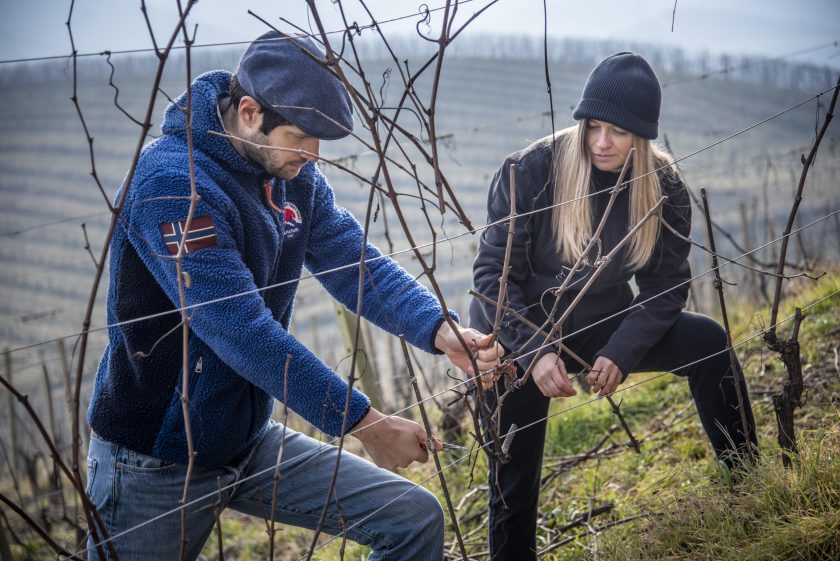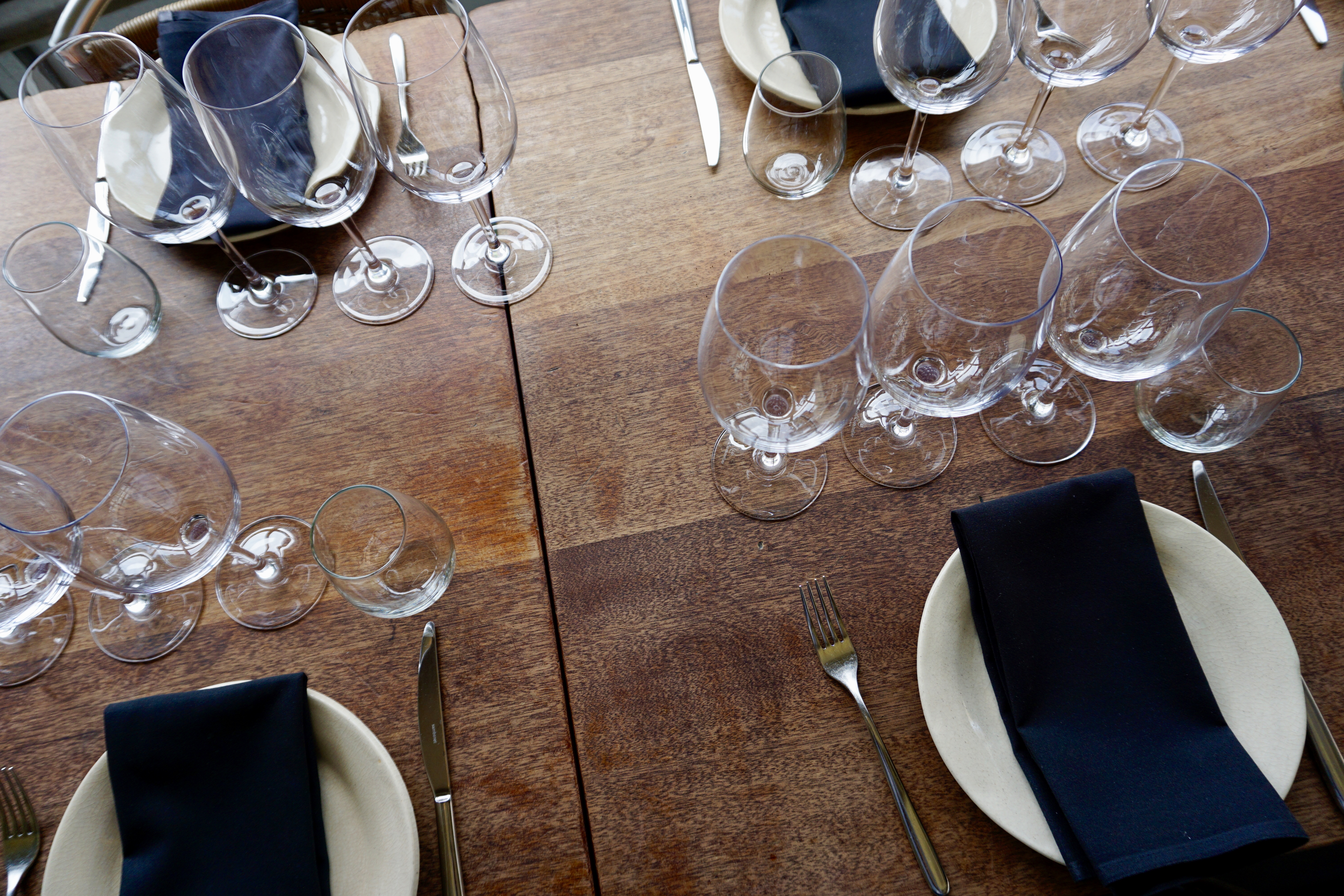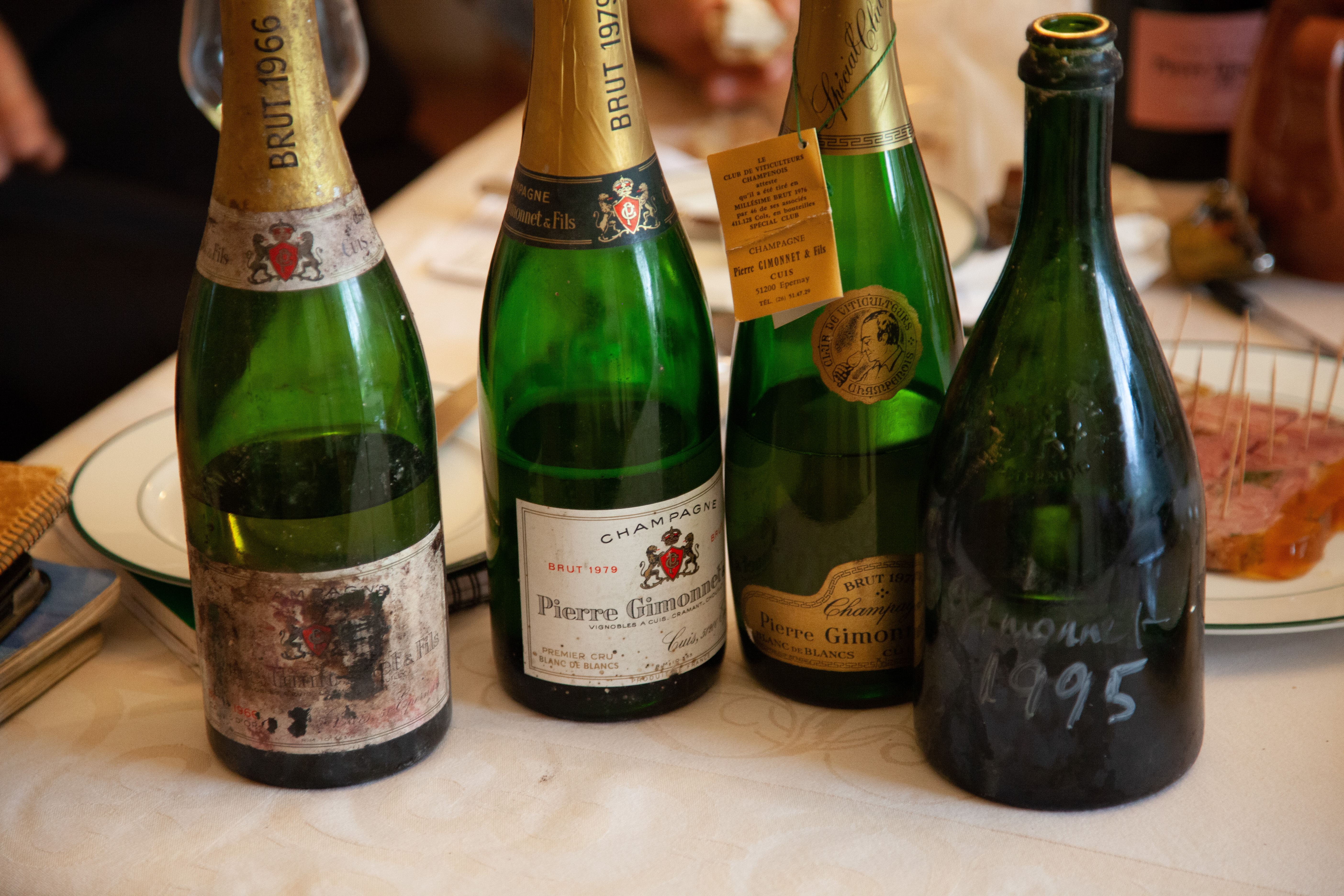Scouting for land in Piedmont takes mettle. It’s romantic to think the region’s every undulating hill is touched by providence to produce great wine. But even for Matteo and Martina Molino, whose roots here stretch several generations, the search for land in Costigliole d’Asti, the birthplace of their grandfather, was met with years of disappointment. Every tip it seemed had led them somewhere unsuitable: valley floor, too shaded, stagnant water, wrong aspect. For the family who built their legacy on the exalted wines of La Morra, however, the chance to reinvest and reclaim their heritage in the modest hills of Monferrato was too great an opportunity to pass up. And so the search went on.
When a 3.5 hectare single strip of old-vine Barbera, 350 meters high with a flawless southeastern aspect presented itself, the intrepid siblings jumped at the chance. “Land comes by connection,” Martina explained. “You have to know the people.” When asked who tipped them off she answered plainly, “My father Mauro.”
Mauro Molino has spent his professional life getting to know his land and his people. An agronomist by trade, he has worked in every corner of the region and built a reputation, not just for his own Barolo, but as a devoted consultant with a shrewd eye for finding diamonds in the rough. Though his father Giuseppe never bottled his own wine, he was a founding member of the Terre del Barolo cooperative in 1958 and believed in the potential that lay in his land. After Giuseppe’s sudden passing in 1979, Mauro dutifully returned home from his work in Emilia Romagna to care for the estate. He made his first Barolo in 1982, tenderly wrought from the tiny piece of Conca purchased by his father a generation earlier.
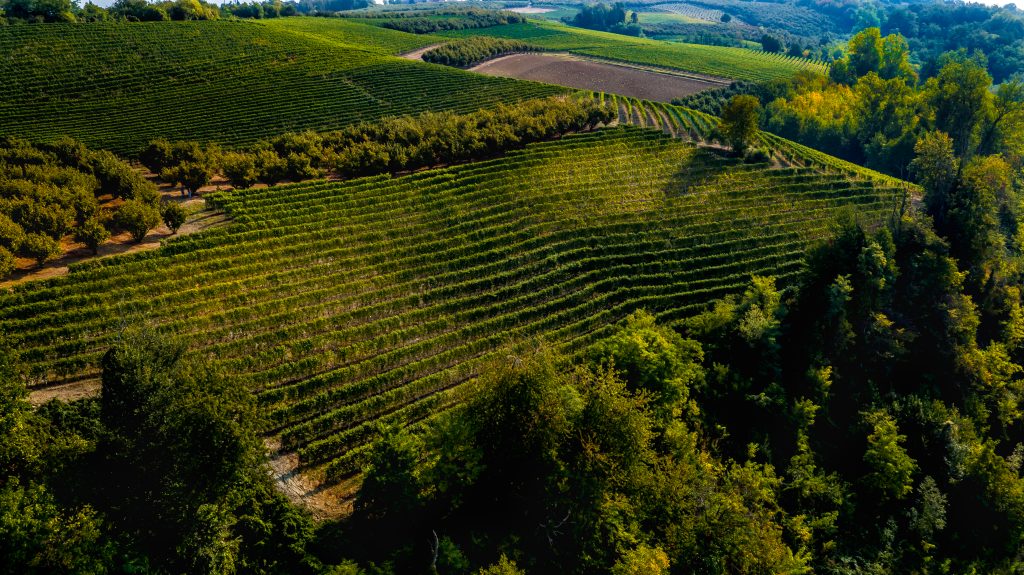
In the 1990s Mauro set his sights high up on a fallow vineyard flanked by forest and hazelnut trees in what is now the Berri MGA in southwestern La Morra. Barolo ‘Gallinotto’ is today known as the estate’s “recovered treasure,” a symbol of pride for the Molino family, whose dedication engendered renewed interest in the cru.
Mauro is a tinkerer as well. Mindful of tradition, but unbound by dogma, he planted two small vineyards of Merlot and Cabernet just to see how they would perform. With Barbera and Nebbiolo it now comprises half the blend of the delicious Vino Rosso ‘Dimartina.’ A steward of the environment since his youth, Mauro has always eschewed conventional treatments in favor of a more holistic approach like using pheromones, fertilizing with manure and planting grasses between the rows.
Today it is Matteo and Martina who take up the mantle, but not without the influence of those who came before. In all, they own 16 hectares, with recent acquisitions in the sandy soils of Guarene near the Tanaro river to expand their Langhe Nebbiolo production. But there is something especially poignant about the new venture in Monferrato. Barbera d’Asti ‘Leradici’, as it has come to be called, may not be the best known wine in the Molino range, but it is uniquely imbued by the spirit of three generations: Giuseppe’s memory, Mauro’s reputation and Matteo and Martina’s commitment to drive the estate ever forward.
The wines
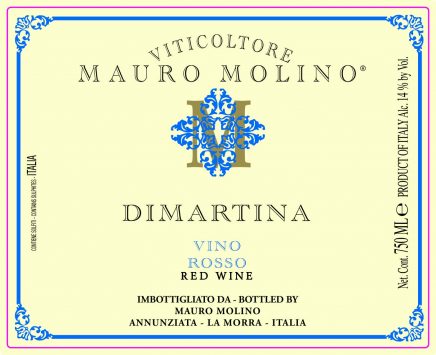
Mauro Molino Vino Rosso ‘Dimartina’ 2019
- A blend of 40% Barbera, 40% Merlot, 10% Cabernet and 10% Nebbiolo
- Harvested in late September through early October
- Calcareous clay soils
- Maceration on the skins for four days and vinified entirely in stainless steel tank
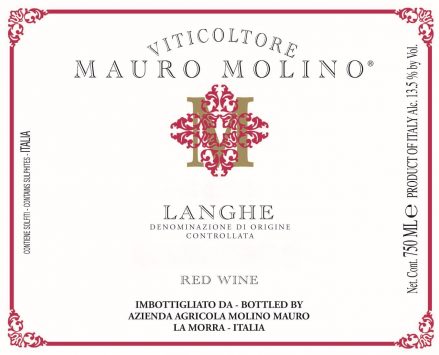
Mauro Molino Dolcetto Langhe 2018
- 100% Dolcetto from vineyards in Dogliani rich in calcareous clay
- 20-year-old vines
- Maceration on the skins in temperature controlled steel tanks for 4 days
- Vinified and aged in stainless steel tanks
- 600 cases produced
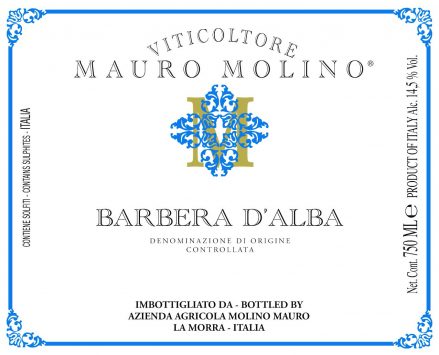
Mauro Molino Barbera d’Alba 2019
- 100% Barbera
- Sourced from proprietary vineyards in calcareous clay soils of Annunziata La Morra (20%) and the sandy soils of Guarene in Roero (80%.)
- Maceration on the skins in temperature controlled steel tanks for 6 days
- Fermented and aged entirely in stainless steel tanks
- 3750 cases produced
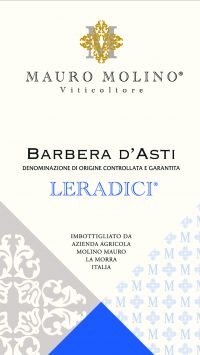
Mauro Molino Barbera d’Asti ‘Leradici’ 2018
- ‘Leradici’ meaning ‘Roots’ is an homage to Mauro Molino’s father Giuseppe, who was born in Costigliole d’Asti, where the wine is sourced
- 100% Barbera from south-facing 25-year-old vines
- Calcareous, sandy soils
- Maceration on the skins for 10 days in stainless steel, followed by a 20-day fermentation
- Aged 8 months in large (52-hectoliter) French oak cask
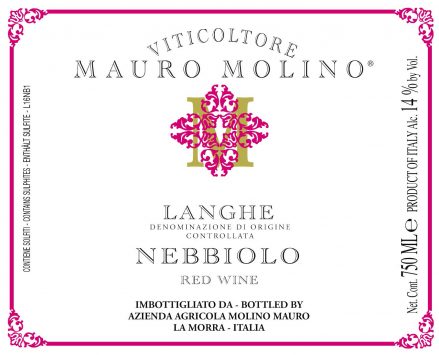
Mauro Molino Langhe Nebbiolo 2019
- 100% Nebbiolo from 10-30-year-old vines in Guarene (80%) and the lower part of La Morra (20%.)
- Sandy soils of Guarene in Roero imbue the Nebbiolo with softness and approachability
- Maceration on the skins for five days in stainless steel tank
- Ages six months in large mostly neutral French oak casks coopered in Austria
- 1000 cases produced
- First produced in the year 2000
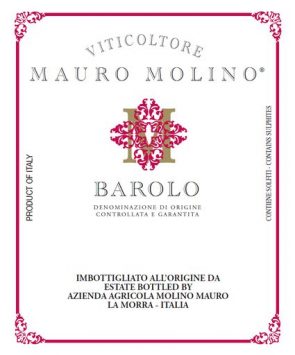
Mauro Molino Barolo 2016 WA93+
- 100% Nebbiolo sourced from Berri and Annunziata MGAs in La Morra and Perno MGA in Monforte d’Alba
- Maceration on the skins for 12 days in stainless steel tank
- Aged 24 months in neutral large (25 – 52hl) barrels
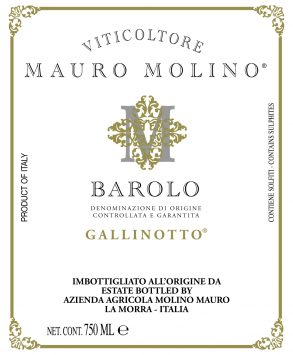
Mauro Molino Barolo ‘Gallinotto’ 2016 WA94
- 100% Nebbiolo from the Gallinotto vineyard, a part of the Berri MGA in southwest La Morra
- Calcareous clay soils | Higher elevation with a clear view of the Alps lends freshness to the wines
- Maceration on the skins for ten days in stainless steel tanks
- Aged 24 months in 50% used barrique and 50% large barrel
- First vintage 2001
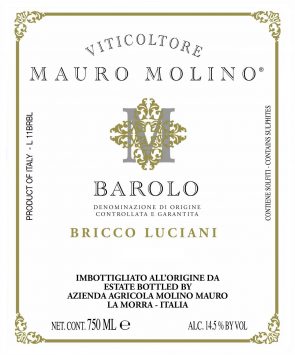
Mauro Molino Barolo ‘Bricco Luciani’ 2016 JS95/WA94/V93
- 100% Nebbiolo from less than a single hectare in front of the Molino winery
- Calcareous soil with a high proportion of sand (20-30%.)
- Maceration on the skins for 10 days in stainless steel, followed by a 20-day fermentation
- Aged 24 months in lightly toasted or untoasted Allier French oak barriques (10% new)
- 4,500 bottles produced each year




